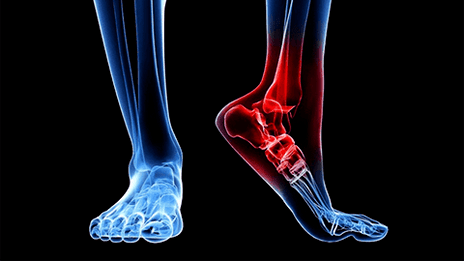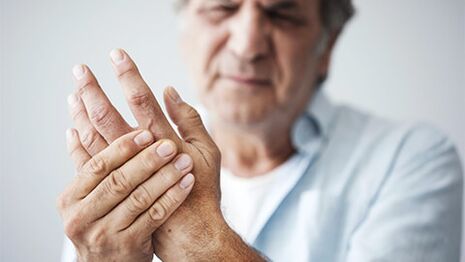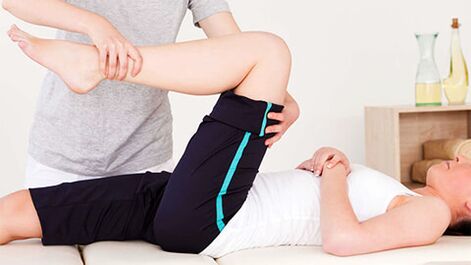
Arthrosis is a whole group of dystrophic deep diseases with different etiology, but a similar clinical picture of pathological changes.Hijalin cartilage wrists, then drunken tissue bone bones, shared capsules and ligamentous appliances are exposed to destruction and deformation.The disease is chronic progressive and without proper treatment can significantly limit the patient's engine activity.
Diagnosis and treatment of pathology deals with arthrologists, rheumatologist, surgeon, orthopedist.
General information
The arthrosis is diagnosed in approximately 1/5 of the planet population, but the disease is characteristic of the elderly.This proves the statistics of their schedules between different ages:
- Young up to 40 years - no more than 6-7%;
- Mature faces after 45 years - up to 20-25%;
- After 70 years - up to 80%.
The disease affects tissues that are under constant load: small arm connections and plus legs, hip and knee joints, areas in the grlic and thoracic parts of the spine, a little less often ankle.
Note! The defeat of the joints of the hand in women occurs 10 times more often than in men.
In many Western countries, the term "arthrosis" is not used, is replaced by the concept of "arthritis".Such a replacement is quite justified, because inflammatory processes in most cases precede arthritis or monitor it.In domestic medicine, the provision of "arthritis" and "arthritis" meant the same disease in essence, but with different processes of the process.In addition, osteoarthritis concepts, osteoarthrosis, osteoarthrosis deformation are used to indicate pathology.
Note! The difference between arthritis and arthrosis lies in the cause of the disease.In the first case, these are inflammatory processes (suffix -it means inflammation, in another -metabolic disorder (protein, mineral).
Mechanism of development and causes of arthrosis
The main cause of arthrosis is a violation of balance in the processes of anabolism and cartabolism of cartilage and bone tissues.If the synthesis processes normally prevail, then during the arthrose change, the destruction processes go faster.As a result, fast aging and degeneration of tissue structures were observed.They start the first collapse at the cellular level and then on an organic tone.The first destructive changes appear:
- Cartilage blur;
- superficial storage;
- microcracks and tears;
- Focal and general states of layer cartilage.
The cartilage loses natural elasticity and density and can no longer serve as a shock absorber during the movement.The correspondence of the form of articulated surfaces is disturbed, which leads to the connection deformation.This exacerbates the development of pathological changes and runs a number of irretrievable processes.In exchange for lost cartilage, bone tissue begins to grow with the formation of spikes and growth, which movements movements can lead to severe patient disability.
Reasons for this scenario:
- Violations of mineral metabolism can lead to pass-through changes in the joints, osteoporosis, etc.
- The lack of tissue nutrition is venous stagnation and poor microcirculation slows down blood supply and lymphatic drainage.The mineral composition of the bone is exhausted, becomes osteoporose and loses the ability of independence.The phenomenon is characteristic of the lack of movement, with vascular pathologies, hormonal failure.
- PLAND PROCESS - the consequence of acute infectious diseases, body hypothermia, impaired hormonal background.
- Autoimmune reactions are chronic hotplates of inflammation, nerve stress, endocrine pathology and other causes can cause the aggression of the body's immune system against their own cells, including articulated tissues.Most often autoimmune lesions with rheumatoid arthritis, scleroder and red lupus.
- Increased shared wear - mismatch between functionality and laid load slows down the synthesis process and accelerates destruction.The phenomenon is characteristic of athletes, dancers, excess weight people, as well as everyone who deals with severe physical work or are associated with long static loads (standing work).
- Injuries - bruises, dislocations, fractures, penetrating wounds, tears - violate the tissue structure and give momentum at the beginning of deformation.
- Genetically established pathologies - Connective tissue of dysplasia, violation of collagen synthesis initially forms an unstable, low-functional compound.
Some reasons for each other echo and form a complex pathological complex.
Attention! Hormonal deviations play a particularly important role in breach of bone tissue metabolism.Failure in the thyroid gland, menopause, getting contraception, corticosteroids - all this is a direct path to osteoporose and arthrosis changes in the skeleton.
Classification of changes
Several definitions of the criteria: Causes and etiology, localization, coverage area, are used in the arthrosis system.
According to the etiology:
- Primary arthrosis - develop independently, with damage to completely healthy joints, without the participation of previous pathology;
- Secondary - formed against the background of the disease (gout, psoriasis, rheumatism), as well as in the presence of existing articulated deformations or injuries.
By degree of coverage:
- Local forms - with impairment of a limited number of joints: monoarrose-1 joint, oligoartritis-2-3;
- Generalized forms are different types of polytrose, when 3 large structures and more involved in the pathological process.
According to the process localization, the names of the arthrosis of each wrist are separately given:
- Coxartrosis - Disables the connection with the hooks;
- Spondillart - affects intervebrelal disks, mostly cervical cervix, chest and lumbar;
- gonartrosis - with impaired work of knee joint;one of the most common species;
- Cruzartrosis - with the involvement in the pathological ankle process.
Arthrosis can be quickly or slowly progressive, compensated or decompose.
Main symptoms and signs
Arthrosis is a complex disease.Conventionally can be divided into several pathologies united among themselves:
- HONDRITIS AND HONDROZA - inflammatory and degenerative lesion of cartilage tissue;
- Osteoporosis is also osteoporosis - pathological process in bone structures;
- Synonitis - involving the lining of the shell shared capsule;
- Bursit - General inflammation of common bags;
- Reactive damage to soft tissues in the neighboring area - affects muscles, ligaments, fibers.

Depending on the scene, degree and form, they are observed simultaneously or selectively.With this in mind, a complex of symptomatic changes was formed.Among them:
- Pokhrutzhazing is a symptom of violation of mineral metabolism and the first sign of the disease.Can occur at any age.
- Stock - it's intensively manifested in the morning.It is short -Term and can be expressed by the effect of wrist heading.
- Limiting mobility - reducing the amplitude of the movement in the execution of active or passive actions.
- Pain - has a different manifestation, starting from unpleasant and painful, which, after intense load, acquires background character and ends with acute sharp - when starting the movement.Thus -called "Pain Starting" are especially characteristic, which are manifested after a long standby and last until the wrist is completely developed.
- Dismissal - with inflammation of soft tissues, sinovitis, Buritis.
- Deformation - it was observed by the full degeneration of cartilage and lack of shock -Aabsorbing factors.
Note! Novolovi Bushara and Geberdena is a characteristic sign of deforming arthrosis of hands.They grow bones with osteophyte processes.
Phase and degree of arthrosis
In terms of the intensity of the change of arthritis, 4 phases of the disease differ:
- 1. Phase - with a slightly tan cartilage (violation of the structure and functionality in collagen fiber).In X -Ray, the image is practically visible.
- 2. Phase - The sting of the cartilage fabric in lumen joints is up to 50%.It is covered with cracks, a slight pain appears in the area of the damaged compound.Osteophytic complexes appear on X -Ray;The joint gap slightly reduces its size.
- Phase 3 - The cartilage lesion almost reaches the base base, the joint gap is sharply reduced.
- 4 phases - cartilage is completely damaged, which leads to partial or complete degeneration of sinovia fluid, abrasion of bone tissues on each other and the deformation of the compound.In some areas, sclerosis changes.Extreme arthrosis event is a fusion of articulated tissues with the environment of structures and complete loss of mobility.
In some sources, phase 1 and 2 combine into one.
With the progress of symptoms, a person's motorcycle activity suffers.Given the violation of the functional performance of the common, 4 degrees of possible development of pathology differ:
- 0 degrees - mobility and performance are preserved in full;
- 1 degree - the patient retains the ability to self-service and manifest social activity, but is unable to deal with work activities;
- 2 degrees - difficulties in the manifestation of social activities are added to the violation of the work activity;
- 3 degrees - all types of activities are limited or completely impossible: work, social and supermarket;The patient needs constantly constantly.
What are the possible complications
You can cause a treatment with a number of unpleasant consequences:
- Constant pain syndrome;
- chromost;
- vertebrates (with spondylarthra);
- A deformation in the joint;
- Complete real estate with structural axis.
What includes the survey process includes
For diagnosis of arthrosis, medical examination is enough with a collection of anamnesis.In order to determine the degree of damage, an instrumental examination is carried out.The main ways to obtain a clear image of the disease:
- radiography;
- CT, MRI;
- ultrasound;
- scintigraphy;
- Diagnostic arthroscopy with crunchy tissue biopsy and synovial liquid.
In an acute inflammatory process, the doctor prescribes additional analyzes: general blood test, rheumatics, biochemistry (glucose level, protein compounds, electrolytes).
Treatment
It is impossible to completely eliminate the disease.The timely treatment of arthrosis allows you to maintain the functionality of common, normal motor activity and prevent pain.To turn off complications, you should start in the first phase.
Drug therapy Contains:
- Anti -inflamatory medications, mainly NSAIDs;
- Intra -Articular steroid blocks of pain and inflammation (with expressed sinovitis, burrititis);
- Prostrezic inhibitors - slow down and suspends the process of destroying bones and cartilage;
- Antispasodik - prevent muscle cramps;
- angipotents and medications to improve blood microcirculation in affected tissues;
- Chondroprotectors;
- Synthetic replacement for Sinovian liquid;
- Vitamin and mineral compositions.

Physiotherapy complex prescribed parallel to improve drug performance.Main physiotherapy:
- Magnetotherapy;
- electrophoresis;
- UHF;
- mud;
- baths;
- massage;
- Practice therapy and kinesiotherapy with special simulators.
Surgery - The only way to treat in later stages, when the cartilage tissue is completely destroyed.The following solutions are possible:
- endoscopy - with partial or complete substituting compound in artificial analog;
- Arthroscopy - Minimum invasive work to remove osteophytes or partial replacement of cartilage;
- Arthrodesis - Closing the wrist and repair in the most favorable position;Unfolved joint surfaces growth over time.
Forecast
Arthrosis does not threaten the patient's life, but the lack of treatment can significantly limit freedom of movement and worsen the quality of life.Timely and competent therapy in early phases can restore the wrist in a healthy state.In other cases, only the slowdown in the degeneration process is possible with the help of conservative treatment and fees for lost functions due to the prosthetics.
Disease prevention
Therefore, the full recovery is almost impossible, therefore, prevention should be paid to special attention.The main request is a healthy lifestyle and complete treatment of inflammatory processes:
- Do not allow hypothermia and treat infectious diseases in a timely manner;
- Avoid physical overload and long static loads;
- maintain normal body weight;
- Follow the real diet - a balanced composition of vitamins and minerals is very important for the health of the musculoskeletal system;
- completely (if possible, to full recovery) treat any damage to the joints;
- Practice systematic physical exercises to encourage blood circulation (bicycle, hiking, light running, scandinavian walking).
If you are at risk (older age, poor heredity, physical overload) be sure to undergo a regular radiographic examination.






















